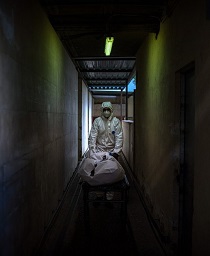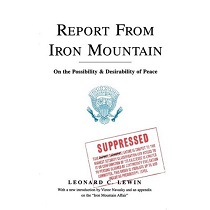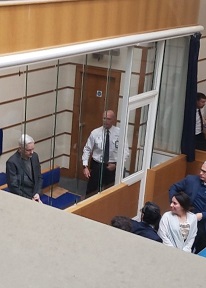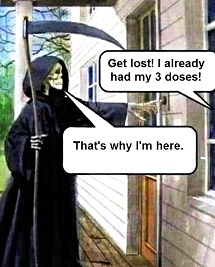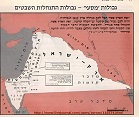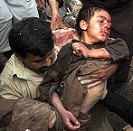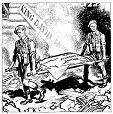Lavrov Explained What Russia Hopes To Achieve By Talking About Red Lines
Andrew Korybko
Andrew Korybko's Newsletter
Such rhetoric should be taken seriously, not downplayed, but it also shouldn’t be exaggerated either.
Lavrov gave an insightful interview to Sky News Arabia in which he explained what Russia hopes to achieve by talking about its red lines. The Mainstream Media (MSM) is convinced that they’re meaningless and that all such ones can be crossed without fear of World War III, while the Alt-Media Community (AMC) interprets all such rhetoric as hinting at a nuclear response in that event. It turns out that they’re both half-right and half-wrong per what Lavrov revealed about his country’s calculations:
As a reminder, Putin famously described NATO’s expansion into Ukraine as crossing a red line for Russia during his speech on 24 February 2022 announcing the start of Russia’s special operation:
Before proceeding, here are five background briefings that readers might be interested in reviewing:
● 15 September: “Russia & The West Are Engaged In Political Choreography Over Ukraine’s Use Of Long-Range Weapons”
● 15 September: “What Would Really Be Achieved By Russia Using Nuclear Weapons In Ukraine At This Point?”
● 18 September: “Why Won’t Russia Destroy Ukraine’s Bridges Across The Dnieper?”
● 18 September: “The ‘War Of Attrition’ Was Improvised & Not Russia’s Plan All Along”
Everything will now be analyzed in the context of Lavrov’s explanation about Russia’s red lines.
Starting from the beginning, Putin’s reference to this was in regard to why he authorized the special operation, namely to stop NATO’s continued – albeit at the time clandestine – expansion into Ukraine. He also later explicitly warned against anyone “directly attack[ing] our country”, which NATO has yet to do, though allowing Ukraine to use its long-range weapons to that end would skirt the line. Ukraine has since directly attacked Russia on numerous occasions, however, but no nuclear response followed.
The last part of his abovementioned speech where the Russian leader warned about how “the consequences will be such as you have never seen in your entire history” if they “stand in our way or all the more so create threats for our country and our people” is the most controversial. The way in which he worded everything strongly implied that nuclear weapons would be used if NATO turned the conflict into a proxy war, but he might in hindsight have been alluding to the scenario of a direct NATO attack.
In any case, no such attack has yet to occur, nor has Russia used nuclear weapons despite the conflict indisputably becoming a proxy war of attrition with NATO. This observation coupled with the way in which the Western public initially interpreted his intentions to make them think that Russia isn’t serious about resorting to nuclear weapons in defense of its red lines, thus emboldening “mission creep”. Nevertheless, all the while, NATO has yet to cross the ultimate red line of directly attacking Russia.
It's relevant at this point to refer back to the insight from Lavrov’s latest interview. As Russia’s top diplomat said, “We talk about the ‘red lines’ in the hope that our assessments and statements will be heard by clever decision-makers. It is silly to say that we will push the red button, if tomorrow you fail to do as I demand.” This places into context what Putin meant with respect to every implied red line apart from the one about a direct NATO attack against Russia.
NATO’s pre-2022 expansion into Ukraine explicitly crossed Russia’s red line as Putin himself described it, but neither that nor the bloc’s decision to turn the conflict into a proxy war of attrition and Ukraine’s direct attacks (including against civilians using NATO arms and intelligence) led to a nuclear response. In retrospect, Putin’s strongly worded statements were intended to deter the last two in order to reduce the chance of these escalations spiraling out of control into World War III, which he wants to avoid.
They still went through with them anyhow, but in a gradual “boiling the frogs” approach that gave Russia time to adapt to the “new normal” without feeling threatened enough to drastically escalate, thus reducing the chances of the aforesaid spiral. While this observation might seem to suggest that the MSM was right about how Russia’s red lines can be crossed without fear of World War III, it’s important to remember that NATO still won’t dare to cross its ultimate red line of directly attacking Russia.
Considering this, the MSM and the AMC were both half-right and half-wrong. The first was right that some red lines can be crossed without triggering a nuclear response exactly as Lavrov just confirmed, but they’re wrong about how there are supposedly no red lines whose crossing would ever provoke this. Likewise, the second is right about how a nuclear response is possible if certain red lines are crossed, but they’re wrong to imply that the crossing of any red lines would automatically lead to that.
The takeaway is that Putin’s famous talk of red lines was primarily meant to deter a direct attack from NATO, with the supplementary objective being to deter the bloc’s indirect involvement in the conflict. The first succeeded while the second didn’t, nor was Ukraine deterred from directly attacking Russia, but red lines are still alluded to in order to convey to the West that certain escalations should be avoided. Such rhetoric should be taken seriously, not downplayed, but it also shouldn’t be exaggerated either.
____________________________________________________________________________________________
Image: © crimea.ria.ru. AWIP: http://www.a-w-i-p.com/index.php/aS5s

